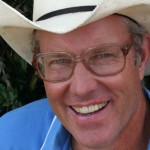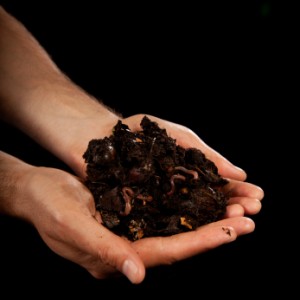
Ask Joel Salatin
Dear Joel,
 What resources do you recommend to help someone get started without getting ripped off? My wife and I live on 40 acres that we want to, at minimum, grow our own nutrient dense food at the same time we are treating our land with sustainable husbandry practices. We basically want to enrich our soil and control pests in harmony with nature so we will be rewarded with the most nutritious, nutrient dense food possible.
What resources do you recommend to help someone get started without getting ripped off? My wife and I live on 40 acres that we want to, at minimum, grow our own nutrient dense food at the same time we are treating our land with sustainable husbandry practices. We basically want to enrich our soil and control pests in harmony with nature so we will be rewarded with the most nutritious, nutrient dense food possible.
-Dave S.
Dave-
Very astute question. The problem with inputs is that the performance data always compares the product to nothing. “Our XYZ foliar elixir increased green beans by 40 percent.” Sounds great, until you realize that it was compared to nothing. This is not the real world you and I live in.
In the real world, we have a certain amount of time and money–an investment–we’re willing to put in something, so we actually want to compare product A with product B. But none of the companies does that. Nobody compares the relative cost/benefit, or return-on-investment, with compost tea going head to head with BD501 in biodynamics, or Neptune’s harvest foliar, etc.
So at the end of the day, we make decisions based on “I really liked that guy.” But that’s not very scientific when it comes to agronomy fertility management. I’d like all the organic input outfits–all the people at the ACRES USA tradeshow, for example, to put together a kitty of money and hire someone for 5 years to do half acre plots on a 20 acre field (that would be 40 trials) pitting all the products against each other. Then you’d really be able to compare.
So here’s my take: buying in things is the LAST thing you want to do. Look to nature. How does nature build fertility? First is organic matter. Begin composting. Get leaves, rotted sawdust, wood chips, corn cobs, leaves. junk hay, corn fodder, junk straw, apple pumice–anything carbonaceous, and get it on your land. That will feed the latent biology and wake it up to do what it needs to. For example, azotobacter are free-living bacteria that will take as much as 100 pounds of nitrogen out of the air and put it into the soil. But they only become active if you have at least 4 percent organic matter. Most of our soils are below that because the organic matter has been depleted through tillage, overgrazing, erosion, etc.
Second, put on animals in high densities and begin moving them around. That will stimulate biomass production and nutrient cycling, which is the way nature builds soil. There is no animaless ecosystem in the world for this reason. Buying in feedstocks for poultry or rabbits is okay as a remedial soil building technique.
Third, start working on water control. Build a pond or get some water retention so you can stockpile it in the rainy times and then meter it out in the dry times to maintain biological activity and biomass growth. As a land manager, your mandate is to stimulate more solar energy conversion into decomposable biomass than nature can do in a static state. That’s what humans are for.
This is probably enough for starters. Go for it.
-Joel
Dear Joel,
After reading your very practical and common-sense books, I have a few questions. When you talk of rotating your animals on your “fields,” what rotation schedule do you follow? From what I can gather, it goes cattle, pigs, chickens, rest 100 days, cattle, pigs, chickens, rest. Is this correct? Where does a garden come into play? Is that in one permanent place with the pigaerators working in the fall or spring?
Thanks!
Patty K.
Patti-
I wish it were this simple. It’s not. Let’s start with the cows. They move daily to a new paddock. The eggmobile follows them, wherever that happens to be. The broilers want short grass, not only because it’s easier to masticate and more palatable, but also because it keeps the chickens cleaner and exposes predators, who don’t like to be exposed. A great horned owl will pick a weasel right up off the ground. To keep that grass at the proper height, we graze as necessary ahead of the broiler shelters to manicure the plate.
The pigs are in their own paddocks. We do not use them in the chicken-cow fields because they tear up too much. It would be a nightmare trying to move little broiler chicks through a field pocked with bathtub-sized holes. The pigs do follow the cows in the hay shed after the hay feeding period to turn the bedding into compost.
Turkeys can handle much longer grass, but they like it shorter than cows do, as well, so we use the cows to prepare their table too. The egg layers in the feathernet are like the turkeys in grass length desire, so we run the cows around them as necessary as well. Wherever the cows go, the eggmobiles follow.
Then you have hay to think about. We rotate our hay fields so that different fields are allowed to go to full physiological expression at different times of the year, and even in different years. This creates diversity in the sward. We don’t move poultry through the tall grass, so we have to account for the hay ground in our rotation with everything. It’s quite a ballet, and takes awhile to get it all running smoothly.
Now as if that weren’t enough, each rest cycle is different because growth is different throughout the season. Sometimes it’s 50 days and sometimes it’s 150 days. The biggest reason people fail at this is because they want a cookie-cutter formula and can’t seem to understand how much of a spontaneous dance it is. But if you’ll stay flexible, keep observing, and watch what’s going on, you’ll get skilled at it and it will happen effortlessly.
 Off The Grid News Better Ideas For Off The Grid Living
Off The Grid News Better Ideas For Off The Grid Living

